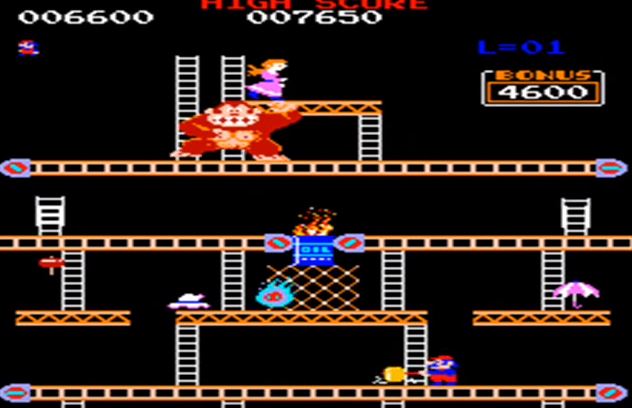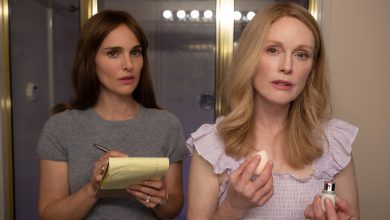Damsels or Daughters: Fetishization in Video Games

Image courtesy of Carls493 via YouTube. / CC BY-NC 2.0
(Note: This article contains some spoilers for the video games “The Last of Us,” “Bioshock Infinite,” “The Walking Dead: Season One,” and “The Last of Us: Left Behind.”)
As a female gamer, I often recognize that my identity as a woman will be greatly and stereotypically underrepresented by the games I play. This notion is further amplified because I am also a Latinx bisexual gamer. According to a study and article from 2009 on video game representation, the ratio of male to female characters in games is extremely disproportionate in comparison with the population of the United States at that time. Additionally, most characters of color are significantly underrepresented in games when measured against their actual numbers in the U.S. census. White and Asian characters are the only groups to escape this treatment, with white characters still receiving the majority of this representation. All of these various disparities demonstrate a pattern and problematic element to many games released in the past and more recently: the majority of white heterosexual cis male protagonists in such narratives.
Such characters do not reflect my own identity, not to mention the identities of so many others. When those identities are represented, the games that they appear in relegate them to the sidelines as just part of the white protagonist’s story and not as the official protagonist themselves. They act only to facilitate the white protagonist’s interests and ensure that their plans and desires become realized, even to the point of fetishization.
Female characters in particular become fetishized sexually through various heterosexual erotic encounters, highly impractical outfits, and lesbian desire seen through the heterosexual male gaze. However, non-sexual types of fetishization also take place in video games that still appeal to the sensibilities of the white heterosexual cis male gamer in the end.
Across the history of video games from classics to the modern day, female characters have been fetishized in the sense that they appeal to hypermasculine desires when they play the roles of damsel in distress and sidekick to their male protagonist counterparts. When they occupy such positions, male gamers fulfill their fantasies of saving, protecting, and guiding women. Through the medium of video games, they project such desires onto these characters, fetishizing them so that they can interact with and accomplish their fantasies as if they happened in real life. Furthermore, questions of race, sexual orientation, and other factors either drive such characters into marginalization or go unasked altogether.
In the 1980s era where Samus Aran served as a groundbreaking female lead for video games in “Metroid,” classics like “Super Mario Bros.,” “The Legend of Zelda,” and “Donkey Kong” all featured the element of the damsel in distress. The female characters, portrayed as princesses or simple love interests in these examples, are presented as the ultimate goal of the hero’s quest, kept just out of reach until they achieve success. In this way, the women never have any agency in their stories, even in those that are explicitly named after them, and must wait for the male hero to save them in order to achieve freedom.
The presentation of all these heroes and their damsels in distress reflect a distinct racial dynamic as well. Mario and Link are depicted as white men on adventures to save their equally white princesses of Toadstool, later named Peach, and Zelda. Meanwhile, Donkey Kong serves as the villain for his game, with Mario appearing here once again to save the white damsel in distress, Pauline. This narrative seems to draw on both “King Kong” parallels and also, considering racist simian caricatures of Black people, a white male desire to protect white womanhood from the Black male.
Additionally, neither Mario nor Link receive any particular romantic or sexual gratification from Princesses Toadstool and Zelda in “Super Mario Bros.” or “The Legend of Zelda.” Meanwhile, a heart appears between Mario and Pauline each time they meet during “Donkey Kong.” Regardless of whatever level of romance or sexuality takes place in these games, they still reflect a heterosexual masculine desire to save women and be viewed as their heroes. Female characters become fetishized into objects through this lens, purely existing just for the male protagonist’s romantic gratification, need to be thanked, and desire to be useful. Heterosexual male gamers want these women to depend on them entirely, fetishizing these characters in order to fulfill their power fantasies.
This damsel in distress trope has continued on quite strongly into modern gaming as well, featured in games like the “BioShock” series, the “Kingdom Hearts” series, “Dead Space,” “The Last of Us,” “Resident Evil 7: Biohazard,” and “The Walking Dead: Season One.” While the narrative of saving a white woman still persists in many of these, some games like “Kingdom Hearts,” which is made by Japanese developer Square Enix, and “The Walking Dead: Season One” go against this idea and have female characters of color occupying these roles.
Another important gendered trope that has come up in more modern games is that of the female sidekick. In this role, their main goal is to help the (usually) male protagonist succeed in his adventures and facilitate his actions. By doing 2this, these female sidekicks learn lessons from this male hero and mature more within their own identities, especially if they are young or in adolescence. Notable female sidekicks that follow this specific aspect of the trope are Ellie from “The Last of Us,” Elizabeth from “BioShock Infinite,” and Clementine from “The Walking Dead: Season One.” In each of these particular cases, the male protagonist and female sidekick have a significant age gap between them and no romantic or sexual connections. The protagonists all serve as father figures to these young women: Joel having lost his daughter Sarah and finding a new daughter in Ellie in “The Last of Us”; Booker literally being revealed as Elizabeth’s father from her original universe in “BioShock Infinite”; and Lee taking on a parental role with Clementine and helping her to learn to defend herself from the zombie apocalypse in “The Walking Dead: Season One.” By fulfilling this role and having these women serve as their sidekicks, a masculine desire to guide women and be their role models comes into being.
These female characters mature and become empowered to action under the direction of their father figures, eventually fighting for themselves and becoming independent. However, as stated previously, all these particular cases still fall into the damsel in distress trope. Ellie loses her agency when Joel rescues her from a lethal surgery. Elizabeth is captured and then pursued and saved by Booker multiple times throughout the story. Clementine consistently needs Lee to kill the zombies attacking her and later rescue her from her kidnapper at the end of the game. Whatever positive representation these characters receive from the sidekick trope is undermined by these incidents.
Additionally, issues of race and sexual orientation complicate these relationships and make them seem more normative in their depictions. Ellie and Elizabeth are both white women being saved by and acting as sidekicks to white men, continuing the trend from the damsel in distress trope. Lee and Clementine, as two Black characters, don’t conform to this singular notion of racial representation, although Clementine herself is vastly considered a white-passing character. Ellie also is herself a queer woman, but this fact only gets brought up and confirmed in DLC for “The Last of Us” and not in the actual main game. With these issues, strong parental relationships are mainly favored towards white characters over characters of color, and queer representation is sidelined when a narrative of parental acceptance of that child’s queer identity could have been given more attention.
With these examples, female characters are again fetishized in that they serve to fulfill a heterosexual male gamer’s fantasy of acting as a father figure that guides and continues to save these women. Through the power of interaction that is uniquely provided by the video game medium, male gamers continue to use these male protagonists to do primarily all the action themselves over their female sidekicks and enact their desires in such ways.
This focus on male-dominated narratives and male gamers came to a head in 2014 when the Gamergate scandal occurred. In summary, Gamergate was a period when women involved in the gaming industry were aggressively harassed and threatened online for even including themselves in the conversation surrounding video games, a place considered a ‘no girls allowed’ zone. These events brought the sexism of the gaming industry into the spotlight and created pressure for changes to occur. More recent games have tried to go against this toxic hypermasculinity surrounding gaming culture and instead go in a more positive direction regarding gender representation. Games like “Horizon Zero Dawn,” “Life is Strange,” “Hellblade: Senua’s Sacrifice,” and “Night in the Woods” have recently provided more female protagonists for gamers. Additionally, “Hellblade: Senua’s Sacrifice” particularly highlights mental illness in a non-demonizing fashion, and both “Life is Strange” and “Night in the Woods” provide prominent queer representation that is not hidden from the narrative.
These games do not give into the previous hypermasculine, fetishized tropes mentioned and instead give these female characters agency without relying on male characters to do so. However, none address the previous issue of race with their primarily white or anthropomorphized protagonists. Games like “Overwatch” give some of this representation but without a defined narrative or protagonist and with problematic racial and cultural elements of its own. Jade in “Beyond Good & Evil,” Faith Connors in “Mirror’s Edge,” and Clementine in “The Walking Dead: Season Two” represent some of the few women of color who are actually leads of their own video game stories. RPG games like BioWare’s two major series “Mass Effect” and “Dragon Age” allow for players to customize their protagonists and thus make their own representation. However, games like “Mass Effect” traditionally promote themselves as still being lead by a white male protagonist, and even the aspect of customization subtly sidelines the question of representation by leaving it entirely up to the player and erasing all responsibility from the developer. This is a narrative of exclusion that needs to change in order for video games to be a space of inclusion. With the progress that has been made for female protagonists as being more prominent and not just locked in some fetishized space, there seems to be at least some glimmer of hope that the gaming industry is capable of change. Perhaps, in the future, the white heterosexual cis male gamer will not be seen as the default for who video games need to represent or please.




